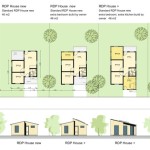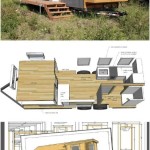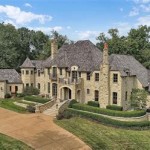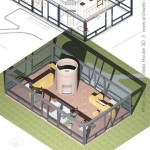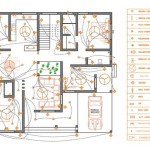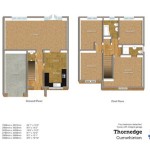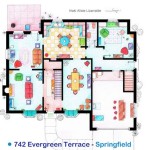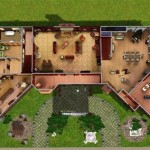Essential Aspects of Boarding House Floor Plans
Boarding houses, often referred to as guesthouses or boarding homes, serve as shared living spaces where individuals rent rooms for extended periods. Unlike traditional apartments or houses, they offer communal amenities and a sense of community. When designing a boarding house floor plan, it's crucial to consider specific aspects that enhance livability, functionality, and comfort for residents.
1. Common Areas
Creating welcoming and functional common areas is essential for fostering a sense of community among residents. These spaces should include:
- A shared kitchen: A well-equipped kitchen is vital, featuring ample counter space, storage cabinets, and appliances like stoves, ovens, microwaves, and refrigerators.
- A dining area: A designated dining area provides a comfortable space for residents to gather for meals or socialize.
- A living room: This area should be inviting, with comfortable seating, entertainment options (e.g., TV, games), and natural light.
- Outdoor space (optional): A patio, balcony, or garden can enhance livability by providing residents with a relaxing outdoor retreat.
2. Private Rooms
Each resident's private room should offer a comfortable and functional living space. Considerations include:
- Room size: Rooms should be spacious enough to accommodate a bed, wardrobe, desk, and other essential furniture.
- Natural light: Windows should provide ample natural light to create a cheerful and inviting atmosphere.
- Storage: Adequate storage space, such as closets, drawers, and shelves, helps residents organize their belongings.
- Privacy: Each room should have a lockable door to ensure privacy for residents.
3. Shared Bathrooms
Shared bathrooms require careful planning to ensure cleanliness, functionality, and privacy. Key aspects to consider:
- Number of bathrooms: The number of bathrooms should be proportional to the number of residents to avoid congestion.
- Layout: Bathrooms should be designed for efficiency, with separate areas for showers, toilets, and sinks.
- Ventilation: Proper ventilation is essential to maintain air quality and prevent moisture buildup.
- Privacy: Bathroom stalls and shower areas should provide adequate privacy for users.
4. Safety and Security
Safety and security are paramount in any shared living space. Boarding house floor plans should incorporate:
- Fire safety: Adequate fire escapes and smoke detectors are essential for protecting residents in case of emergencies.
- Access control: Secure entry and exit points with locks and intercom systems to prevent unauthorized access.
- Lighting: Well-lit common areas and walkways enhance security and create a welcoming atmosphere.
- Emergency protocols: Clear signage and designated meeting points for emergencies should be prominently displayed.
5. Accessibility
Ensuring accessibility for all residents is essential. Floor plans should consider:
- Ramps or elevators: For residents with limited mobility, accessible pathways and elevators are necessary.
- Wide doorways: Doorways should be wide enough to accommodate wheelchairs and other mobility devices.
- Grab bars: Bathrooms and other areas may require grab bars for added support.
- Sensory aids: Features like visual and auditory cues can enhance accessibility for residents with sensory impairments.
6. Sustainability
Incorporating sustainable design principles into boarding house floor plans can reduce environmental impact and energy consumption. Considerations include:
- Energy-efficient appliances: Choosing energy-efficient appliances, lighting, and fixtures can reduce utility costs.
- Natural ventilation: Maximizing natural ventilation through windows and cross-breezes can reduce the need for air conditioning.
- Water conservation: Low-flow faucets and toilets can help conserve water.
- Sustainable materials: Using eco-friendly building materials, such as recycled or natural materials, promotes sustainability.
7. Flexibility and Adaptability
Over time, boarding houses may need to adapt to changing needs and preferences. Floor plans should incorporate flexibility and adaptability, such as:
- Modular design: Dividing spaces into modular units allows for easier reconfiguration of rooms and common areas.
- Multipurpose spaces: Designing rooms that can serve multiple functions, such as a guest room that can also double as a study or office.
- Expandable layouts: Future expansion options should be considered, such as adding additional rooms or amenities.
- Adaptability for different demographics: Floor plans should be adaptable to meet the needs of different resident demographics, such as students, professionals, or seniors.

Simple Boarding House Design Building Plans Designs Minimalist

Gallery Of Permeable Junction Boarding House Andyrahman Architect 16

160 Boarding House Floor Plan Ideas Plans

11 Boarding House Plans Ideas How To Plan Floor

Gallery Of Bioclimatic And Biophilic Boarding House Andyrahman Architect 21 Hotel Floor Plan Plans Hostels Design

Bioclimatic Boarding House By Andyrahman Architect Inhabitat Green Design Innovation Architecture Building

86 Boarding House Designs Plans Ideas In 2024 Small Apartment Building Design

Gallery Of Tiii 15 Boarding House Mvmnt Architect 16

Gallery Of Bioclimatic And Biophilic Boarding House Andyrahman Architect 19 Hostels Design Home Floor Plans

The Boarding House Misfits Architecture

